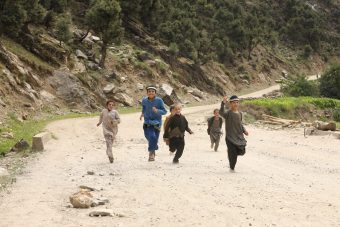
Amir Beg Khusrawi still has vivid memories of a flash flood that swept through his village in Afghanistan’s rugged northeast a decade ago.
“[It] destroyed around 20 houses, claimed livestock, and damaged our agricultural lands so that even now we are not able to use them,” says Khusrawi, 61.
His experience is not unique. In remote settlements across Afghanistan’s Pamir Mountains, deep in the heart of Central Asia, locals have long struggled with landslides and floods.
In recent years, though, both have become worse as flagging rainfall, worsened by climate change, and both overgrazing and fuelwood collection have stripped the land of the greenery that once acted as a barrier against the elements.
For many, the combination of floods, landslides and persistent drought has compounded the challenges of living in Afghanistan.
More:
In some parts of the Pamirs, though, slopes are stabilizing.
That includes the Deh-shahr catchment, a 60 km2 swath of Afghanistan’s rugged Badakhshan province that is home to 3,000 people.
There, local residents, with support from the United Nations Environment Programme (UNEP) and the Aga Khan Foundation, have replanted native trees and shrubs on steep slopes, constructed earthen works to slow water runoff, built small dams to control gullies, and renovated leak-prone drainage canals.
The effort, funded by the European Union, has helped buffer communities from floods, landslides and avalanches by restoring vegetation cover and improving soil stability.
“Often, the best solutions for problems like floods and landslides are a hybrid combination of natural and built infrastructure,” said Hassan Partow, a Programme Manager at UNEP’s Disasters and Conflicts Branch. “They are cost-effective and readily available, which is crucial in a country like Afghanistan.”
Source: UNEP

